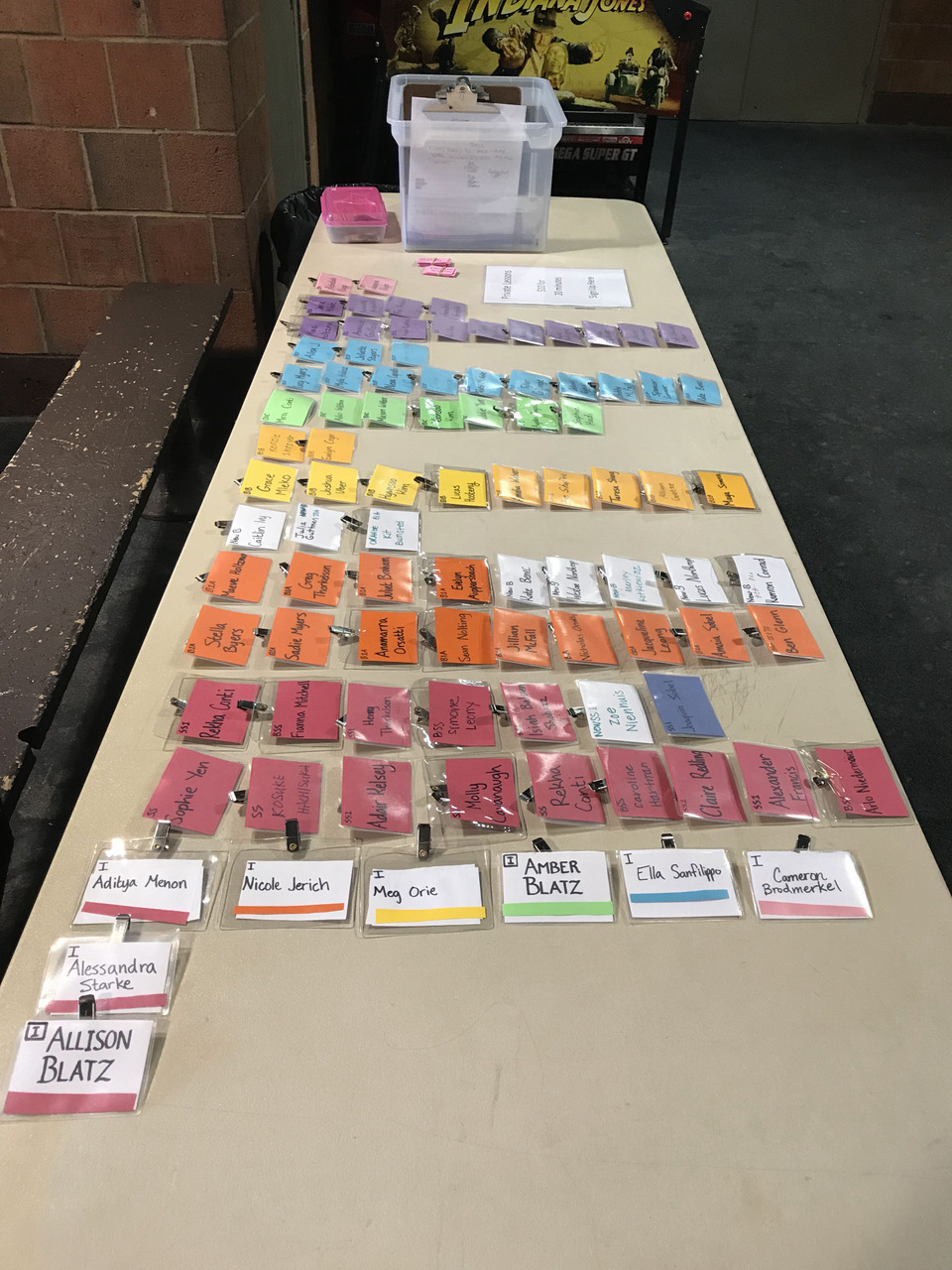Got a big baking spree coming up? Be it a Christmas dinner, a local bake sale, or anything else, if you need to do a lot of baking in a short amount of time, this post will tell you how to do it. Even if you have a more moderate amount of baking to do, following these tips will make the entire process that much more effortless, so you can make perfect, delicious cookies every single time.
Here are my baking credentials. First, I worked in a restaurant for three years, and during that time, I baked more pies, cakes, and cookies than most people will probably ever bake in their lives. Furthermore, every year, my family bakes an absolutely absurd number of cookies for Christmas. I’m taking 12+ batches, each of which makes multiple dozen cookies. We give bags of assorted cookies to coaches, teachers, and instructors of all varieties, then have enough left over to feed our household of seven for over a week.
To start you off, here’s your minimally adequate amount of equipment for any industrial baking spree. You can always have more than this, but here’s what you need to get started.
- Electric mixer
- Two sets of beaters for it, optionally also a whisk but you can whisk almost anything except meringue by hand without much difficulty
- Four cookie sheets: at any given time, there should be two in the oven and two out of the oven being prepped with more cookies
- At least two of each measuring implement (cups, spoons, etc.)
- Sifter
- Large bowls, a few of which are microwaveable
- Other miscellaneous kitchen necessities: plastic and rubber spatulas, wooden spoons, oven mitts, cookie sheets, etc etc.
For any large baking spree, preparation is of the utmost importance. You need to make sure you have enough of all the ingredients, preferably on only one grocery store run. In order to do this preparation efficiently, run through every recipe you’re making (being sure to double, triple, quadruple, etc. the recipe as you’re planning on making it), note down every ingredient in its correct amount, and create a comprehensive tally. Then, take that list and check it against what you have in your house. Making conservative estimates, subtract the amount you have from the amount you need, and note down the delta. Create a shopping list from all those deltas for the ingredients, then shop from that list.
Great! You’ve prepared your ingredients, now prepare yourself.
First, make sure you have the right attire. You’ll want a short-sleeved shirt, a decently sized apron, and close-toed shoes. Here’s why, in order. You don’t want batter on your sleeves and you don’t want sleeves in your batter. Flour always makes a gigantic mess and there’s nothing you can do about that, also, it’s more convenient to have a place to dust off your hands. You will absolutely spill something or other on the floor and you don’t want to have the impulse to wipe off your feet, thus dirtying your hands.
After you’re wearing the right stuff and you’ve washed your hands, consider putting on some kitchen gloves. If you’re making multiple hands-on recipes (that’s any recipe that requires you mould dough with your hands), it’s way easier to change pairs of gloves than to wash your hands thoroughly.
Finally, set out all the ingredients for your first recipe. Organize primarily by the order the ingredients are used in the recipe and by what tools are required to complete that portion of the recipe. For example, all the ingredients which need to be sifted together should sit together next to the sifter itself; all the ingredients which need to be directly mixed together using the electric mixer should sit next to the mixer and the outlet it plugs into, and all the ingredients for the icing should sit off to the side with the piping bags.
I’m not being so anal about all of this for no reason. You’re going to run out of both time and counter space really fast, so it’s important to be hyper-efficient with both while you still have the mental bandwidth.
We’re ready to start baking now! Here are a few tips for preparing your recipe, before it goes in the oven.
When I worked as a prep cook in a restaurant, I had a tiny room—about the size of a home kitchen—to prepare nearly every dish that went through the restaurant. This is what I had. A counter along two walls with a sink and a gigantic electric mixer, a shelf containing dishes and measuring implements, and two 1.5*2.5 foot tables. I got really good at space efficiency. The biggest thing I learned, in addition to what I said earlier about grouping ingredients together, was that no matter how many recipes you have going at the same time, whether it’s one or ten, organization matters. If you’re not using an ingredient, put it away. I don’t care if you’re getting it right back out in an hour for your next set of recipes. Put it away.
Make sure you follow the recipe exactly. If it says to put the eggs in one at a time and mix well after each addition, you had better do that. The recipe isn’t telling you to do it for no reason. Note that I’m not trying to say you can’t experiment yourself and change the recipe—actually, you should absolutely do that, because what works for everyone else might not work for you, and further, the person who made the recipe might have some kind of an agenda (the recipe for chocolate chip cookies that you find on bags of Nestle chocolate chips requires far more chocolate chips than you should justifiably put in, because that’s what they’re trying to sell you). I’m trying to say that your reason for changing the recipe should be something better than “eh, it can’t be that important”. I make the best chocolate chip cookies anyone I know has ever had and the only reason is because I follow the damn recipe.
To conserve measuring implements, measure out dry ingredients before wet ones. Measure baking soda before vanilla extract, flour before milk, etc. As a special rule, if you’re measuring molasses for your recipe (ex. if you’re making ginger snaps), swish a bit of vegetable oil around in the cup measure before you put the molasses in. It will make the molasses stick to the cup measure less.
Here’s my final prep tip: take a sizable swath of counter space and lay out some parchment paper. If you’re like most normal people, you have nowhere near enough counter space for even a few dozen cookies on cookie sheets. Further, you probably don’t have enough available cookie sheets for that. However, if you snug the cookies up next to each other once they’re cool enough to scoop off the cookie sheet, you can fit a ton more in the same amount of space, and you don’t use up your cookie sheets.
While the first batch of cookies are in the oven, prep the next two sheets. I promise, the bake time is long enough for you to be able to do this. I’ve made two sheets of cookies in less than six minutes before. See, nobody cares what the cookies look like so long as they’re tasty, so you can be fast. Your literal only constraint is to make sure all the cookies in the oven at any given time are roughly uniform in size.
When you take a batch out of the oven, cool them on the racks for only a few minutes, then scoop them off and stick em on that parchment paper you laid out earlier. They’ll cool the rest of the way there, and you’ll have the trays freed back up to put more cookies on.
The baking is always the hectic part, since the perpetual cycle of bake-cool-transfer-prepare takes up every available moment. If you’ve done the previous organizational and preparation steps correctly, though, you can minimize the hecticness.
That’s it! My comprehensive list of steps for industrial baking. May your endeavors be successful, and your cookies be sweet. Good luck!




